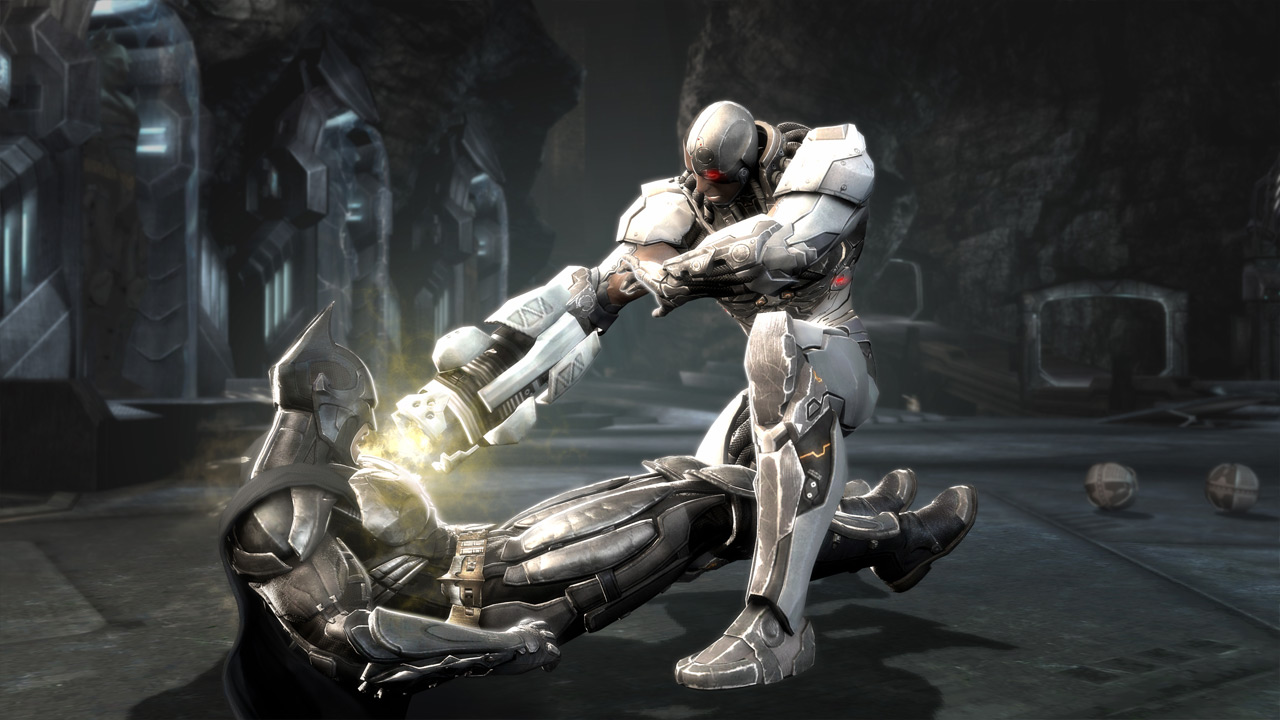4.5 out of 5 stars
From the creators of Mortal Kombat comes “Injustice: Gods Among Us,” a somewhat revolutionary fighting game featuring characters from the DC Comics universe. The story is completely original and is not based on any prior written comic book. From early teasers of the game, it promises to rely heavily on story, unlike a majority of other fighting games.
The story takes place in a universe in which Lois Lane, Superman’s wife, and their unborn child have died. This leads Superman to establish a new oppressive world order where everyone lives in fear. While the story is fascinating and makes as much sense as a superhero story can, it starts off with some confusion because of the DC universe crossover. Its occasional flaws take away from the seriousness with which the game attempts to set the mood.
Many times, the story will pit the player against the same character, but from an alternate universe. This leads to a fight between two superheroes that are almost entirely identical. It causes much confusion, even to those who pay close attention to the plot. Also, while the story is quite intriguing, it’s not entirely fresh––especially to veterans of the Mortal Kombat series. The inclusion of multiple colliding universes will seem familiar to one of the previous installments of the Mortal Kombat series, “Mortal Kombat vs. DC Universe.” While they are not exactly the same, the plot element does not distinguish itself from its predecessor and fails to capture the interest of Mortal Kombat fans.
The gameplay boasts an increased amount of features, ranging from fighter move lists to extensive environment improvements which leave new and older gamers in awe. The fighters in this game are familiar to any DC fan, but some important characters in DC comics were left out for unknown reasons. In contrast, many of the other fighters are unknown to those who aren’t die-hard fans. This begs the question: why they were included in such an exclusive list of select DC characters?
Nevertheless, there are many fan-favorite characters that boast a multitude of moves which play into their character traits and skills seen in DC comics. There is even more variety with the fighting system. Certain characters can change stances and moves, giving them slightly altered weapons. For example, Nightwing can go from using Escrima sticks to combining them into one large staff. This offers more experienced gamers the chance to roll out a plethora of combos into a chain of long and beautiful attacks. The environments around the fighters are also destructible and some items are usable in combat, such as gas tanks and rocket launchers. Some of the stages have multiple areas where fighters can be knocked into, expanding fighting stages two to three times the initial size.
For fans of fighting games, the developers of “Injustice” eliminated traditional rounds of fighting. It is interesting and semi-original, but falls flat because the system makes it harder for players to save themselves with a special move if they are losing. Special moves are also lacking; instead of a multitude of finishing attacks, there is only one special move. The move itself leaves players speechless, but after multiple fights using the same move, it loses its luster and becomes annoying and repetitive.
The graphics are amazing in “Injustice.” The highly detailed DC characters and luscious environments make this game well worth every cent. Everything is designed to look better than what consoles can usually handle. Wonder Woman’s hair is specifically designed to seem like every single strand of hair is rendered meticulously by the console and game developers, proving that the attention to detail paid off on a visual level. The only downfall is that when putting so much detail in the main characters of the game, all the background characters in story mode sometimes lack detail. The graphical rendering of these other characters looks like that of the last generation of games. However, it does not take away from the game because they do not hold much screen time, anyway.
“Injustice” has its flaws, but it’s as close to perfect as a fighting game can get with available technology. It includes many revolutionary features for a fighting game and has a compelling story with some twists and turns. The story sometimes fails to keep its integrity with occasionally awful lines and odd occurrences, but it is nonetheless pretty great and is better than any other fighting game’s stories.









